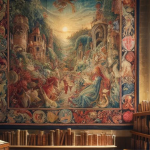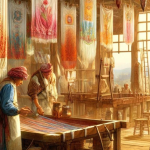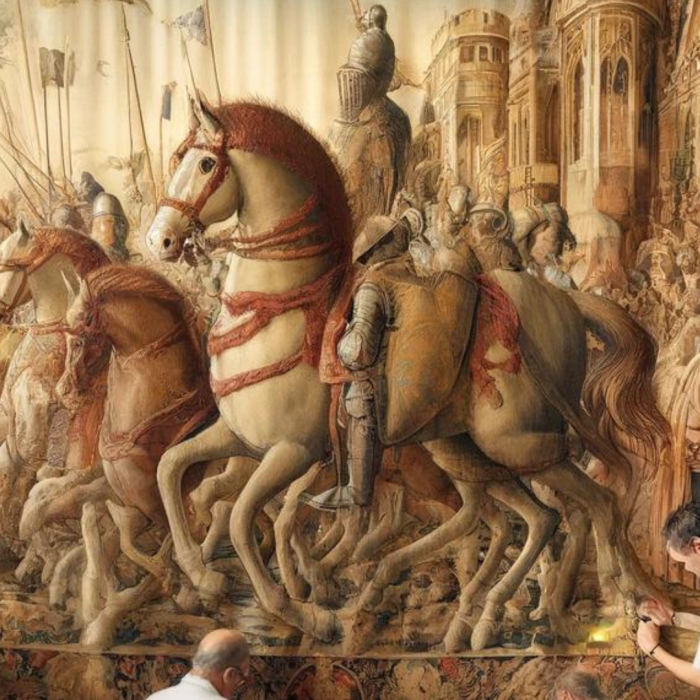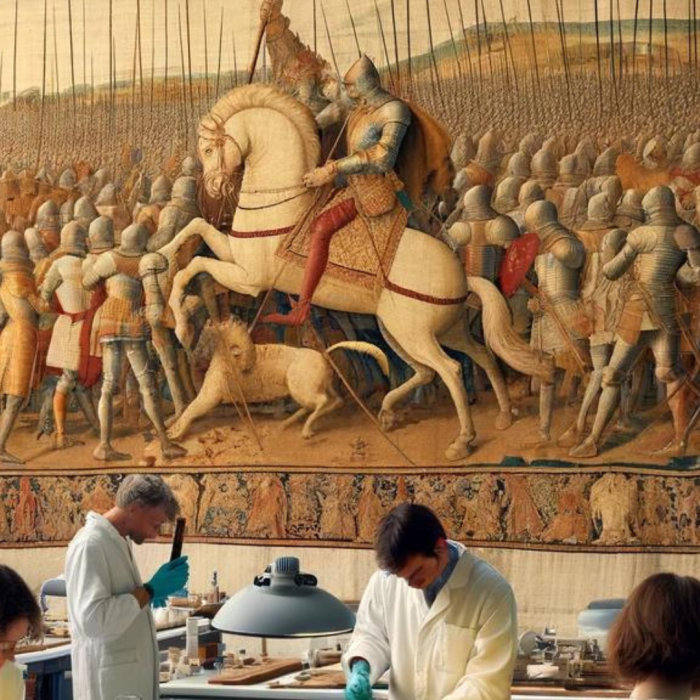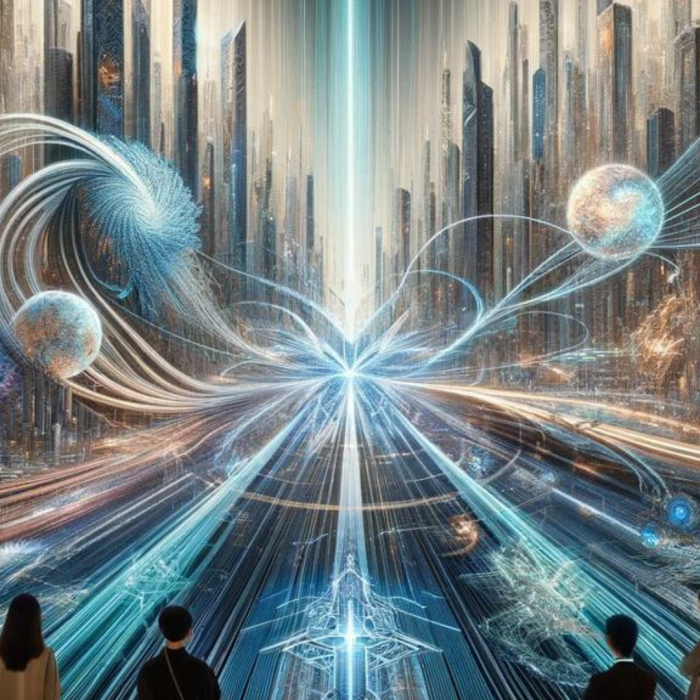The Impact of Technology on Tapestry Design in Interior Design
Brief overview of tapestry as an art form
Definition and Origin
Tapestry is a form of textile art where weft threads are woven by hand on a loom to create intricate designs. It originated thousands of years ago, with early examples found in ancient Egypt and Greece.
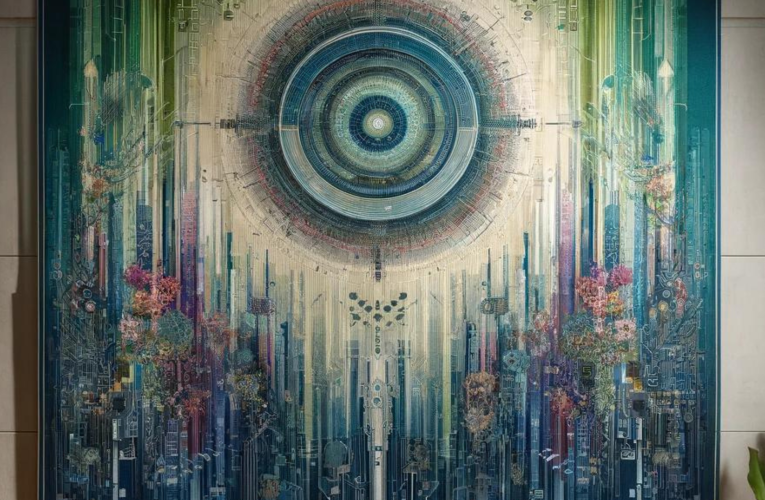
Historical Significance
Throughout history, tapestries have been used as decorative pieces, depicting historical events, religious stories, and scenes from everyday life. They were also used to insulate rooms in castles and palaces.
Characteristics
Tapestry is known for its durability and intricate designs. It often features vibrant colors and detailed patterns, making it a popular choice for adding visual interest to interior spaces.
Introduction to the role of technology in transforming tapestry design
Shift to Digital Tools
In recent years, there has been a shift from traditional hand weaving to the use of digital tools and machinery. Computer-aided design (CAD) software allows artists to create tapestry patterns with precision and detail.
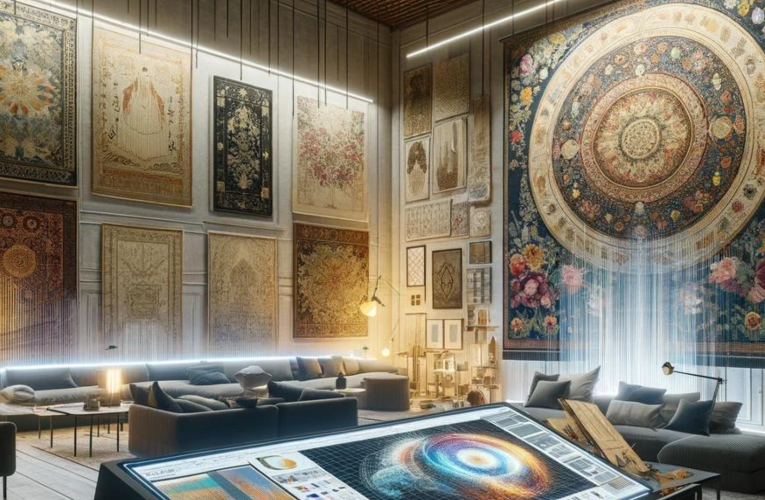
Impact of Digital Printing
Digital printing technology has revolutionized tapestry production. It allows for the creation of highly detailed designs that were previously difficult to achieve with traditional weaving techniques. This has opened up new possibilities for artists to experiment with different styles and motifs.
Exploration of New Materials and Techniques
Technology has also enabled tapestry artists to explore new materials and techniques. For example, some artists are using recycled materials or incorporating electronic components into their designs, creating tapestries that are not only visually striking but also environmentally friendly and technologically innovative.
Historical Perspective
Historical Methods of Tapestry Design
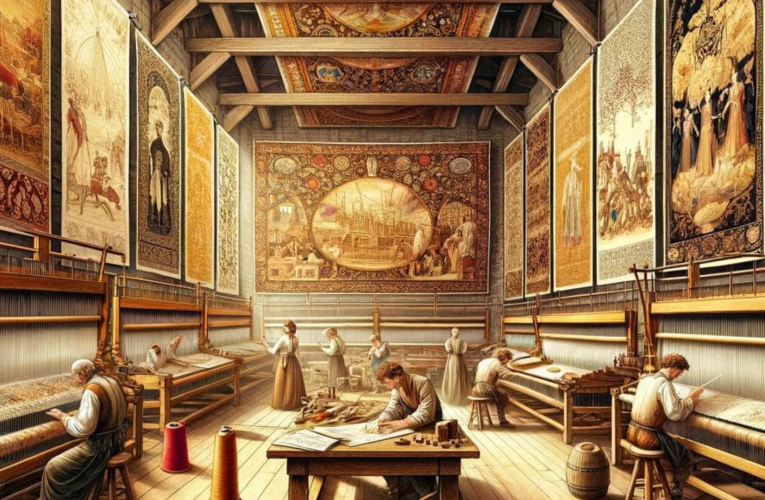
Tapestry design has a rich history that dates back centuries, with artisans employing meticulous techniques to create stunning works of art. These traditional methods encompassed various stages, each requiring a high level of skill and precision.
Hand Drawing and Painting
- Artisans would first sketch the design on paper, creating a detailed blueprint for the tapestry.
- Using natural dyes, they would then paint the design onto the warp threads, ensuring that each color was applied precisely to achieve the desired effect.
Transferring the Design
- Once the painting was complete, the design would be transferred onto the warp threads of the loom.
- This process required great care to ensure that the design was accurately replicated on the weaving surface.
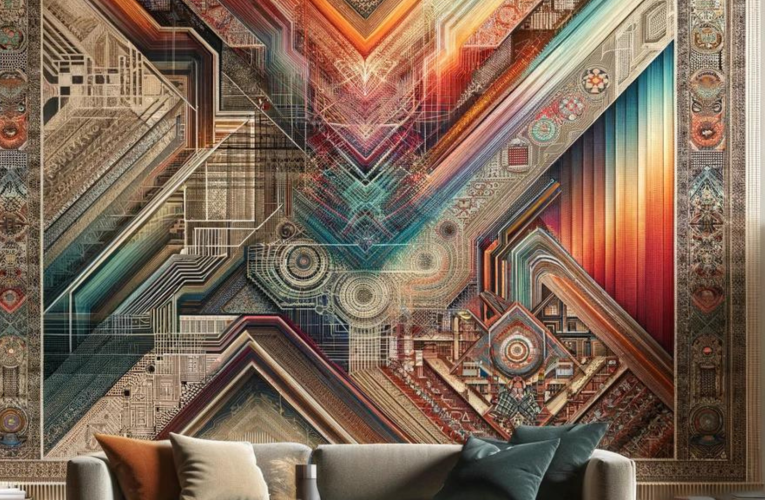
Weaving
- The actual weaving process involved interlacing the colored weft threads into the warp threads to form the final image.
- This was a time-consuming process, as each thread had to be placed by hand to match the painted design.
Famous Tapestry Artists and Workshops
- One of the most renowned tapestry workshops in history is the Gobelins Manufactory in France, which produced exquisite tapestries for royalty and nobility.
- Artists like Jean-Baptiste Oudry and Charles Le Brun were instrumental in creating designs that showcased the skill and artistry of the Gobelins artisans.
The intricate processes involved in traditional tapestry design highlight the dedication and craftsmanship of the artisans who created these masterpieces. While modern technology has revolutionized the way tapestries are designed and produced, the historical methods remain a testament to the art form’s enduring legacy.
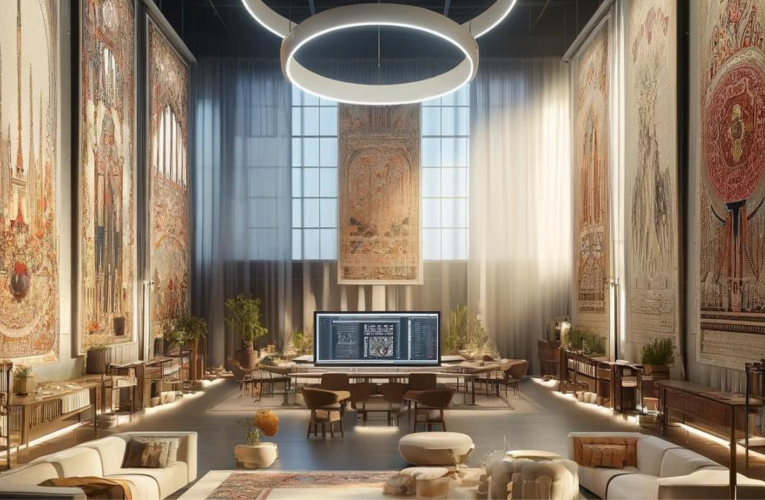
Transition from manual to digital design processes
The transition from manual to digital design processes in tapestry design represents a significant shift in how artists approach their craft. Advancements in technology have revolutionized the field, introducing digital tools and software that allow for more efficient creation and manipulation of designs. Here’s a breakdown of this transition:
Advancements in Technology
Technology has revolutionized tapestry design by providing artists with new tools and techniques. Digital design software allows for more intricate and complex designs that would be difficult to achieve manually.
Introduction of Digital Tools and Software
Digital tools and software have transformed the tapestry design process. Artists can now create and manipulate designs more efficiently, leading to increased precision and faster production times.
Benefits of Digital Design
Digital design offers several benefits, including increased precision, faster production times, and the ability to experiment with different patterns and colors. Artists can quickly iterate on their designs and make adjustments as needed, leading to more innovative and creative tapestries
Examples of Contemporary Artists
Many contemporary artists and studios have embraced digital technology in their tapestry design process. For example, the Studio de Ravel in France uses digital weaving techniques to create intricate and detailed tapestries. Another example is the work of artist Erin Riley, who uses digital tools to create tapestries that explore themes of gender, sexuality, and identity.
Overall, the transition from manual to digital design processes has opened up new possibilities for tapestry design, allowing artists to create more complex and innovative works than ever before.
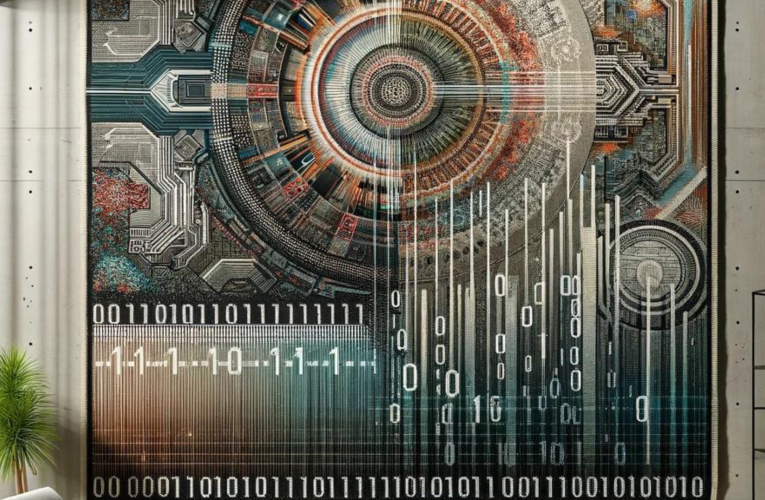
Technology's Influence on Tapestry Design
Digital Weaving Techniques
Digital weaving techniques involve the use of computer-controlled looms to create tapestries. These looms allow for greater precision and speed in weaving, resulting in intricate designs and complex patterns that would be challenging to achieve manually. Additionally, digital weaving techniques often reduce material waste and can be more environmentally friendly compared to traditional methods.
Use of Computer-Aided Design (CAD) Software
CAD software plays a crucial role in modern tapestry design. Designers can use CAD software to create and manipulate intricate patterns with ease, allowing for greater creativity and experimentation. CAD software also enables designers to visualize their designs in 3D, which can be helpful in understanding how the final tapestry will look and identifying any potential issues before production begins.
Impact of Digital Printing
Digital printing has revolutionized tapestry design and production. With digital printing, intricate designs can be printed directly onto fabric, eliminating the need for traditional weaving techniques. This allows for faster production times and the ability to create highly detailed designs that would be challenging to achieve with weaving alone. Additionally, digital printing allows for greater customization, as designs can be easily modified and reproduced as needed.
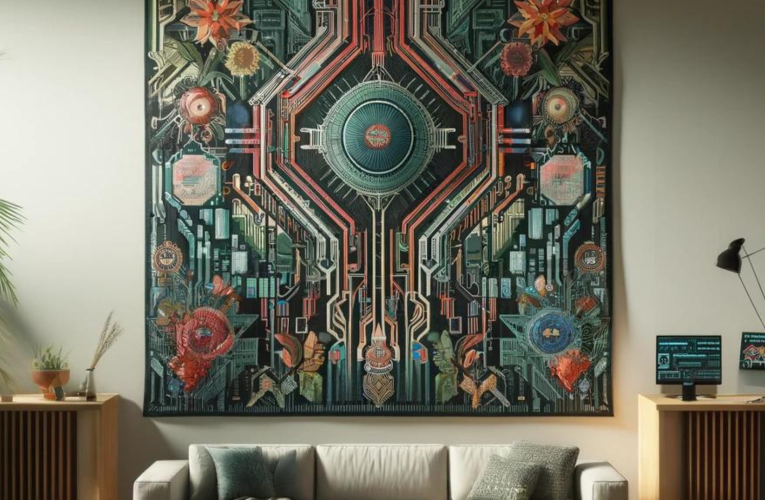
Innovations in Tapestry Materials
In the context of your blog post, “Innovations in Tapestry Materials” refers to advancements in the fibers and materials used in creating tapestries, influenced by technological progress. This section could explore how new materials have been introduced into the tapestry-making process and the effects these innovations have had on the durability and aesthetics of tapestries.
Here’s how you might expand on these points:
Introduction of New Fibers and Materials
Discuss how technology has enabled the discovery and use of new fibers and materials in tapestry design. This could include synthetic fibers, such as polyester or nylon, which offer increased durability and color retention compared to traditional natural fibers like wool or cotton. Mention how these new materials have expanded the possibilities for tapestry artists in terms of texture, color, and size of their creations.
Impact on Tapestry Durability
Explain how these innovative materials have improved the durability of tapestries. New fibers may be more resistant to fading, wear, and tear, making modern tapestries more suitable for high-traffic areas or outdoor use. Discuss any specific examples or case studies where the use of these materials has led to longer-lasting tapestries.
Impact on Tapestry Aesthetics
Describe how these new materials have influenced the aesthetic qualities of tapestries. For example, the introduction of metallic threads or reflective materials can add shimmer and depth to a tapestry, creating unique visual effects. Discuss how artists are incorporating these materials into their designs to create modern and innovative tapestries that appeal to contemporary tastes.
Examples of Innovative Materials
Provide examples of specific innovative materials that have been used in recent tapestry designs. This could include materials like bamboo fibers, which are eco-friendly and have a unique texture, or conductive threads that can be used to integrate technology into tapestries, such as LED lights or sensors.
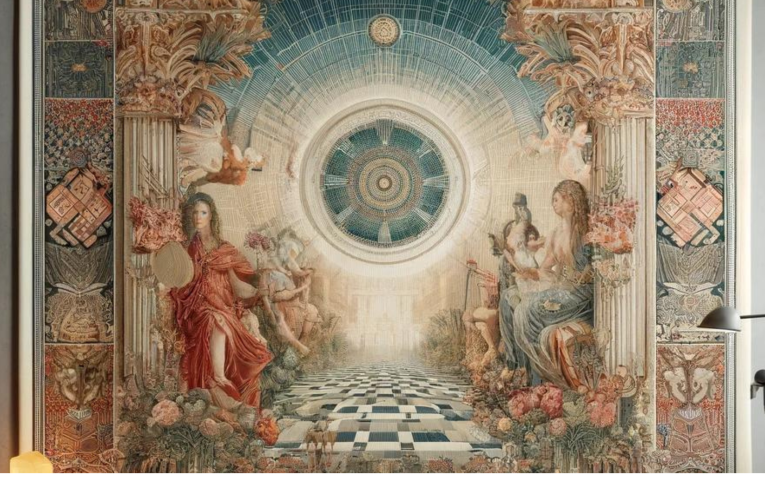
Case Studies
For the “Case Studies” section of your blog post, you can highlight examples of renowned tapestry artists who have embraced technology in their designs, as well as discuss the impact of technology on the popularity of tapestry in interior design. Here’s a breakdown of each point:
Examples of Renowned Tapestry Artists Embracing Technology in Their Designs:
Chuck Close: Known for his large-scale portrait tapestries, Chuck Close has embraced technology, particularly the use of digital techniques, to create intricate designs. His tapestries are often based on photographs, which are then translated into weaving patterns using computer software.
Grayson Perry: A contemporary artist known for his bold and colorful tapestries, Grayson Perry has also embraced technology in his practice. He often uses digital tools to design his tapestries, which are then hand-woven using traditional techniques.
Impact of Technology on the Popularity of Tapestry in Interior Design
Increased Accessibility: Technology has made it easier for artists and designers to create tapestries, leading to a wider variety of designs available in the market. This increased accessibility has contributed to the growing popularity of tapestry in interior design.
Customization: With the help of technology, it is now possible to create custom tapestries tailored to specific design requirements. This level of customization has made tapestries more appealing to interior designers and homeowners looking for unique pieces.
Digital Printing: The advent of digital printing technology has revolutionized the tapestry industry, making it possible to reproduce intricate designs with great accuracy and detail. This has opened up new possibilities for tapestry designers and has contributed to the increased popularity of tapestry in interior design.
Challenges faced by traditional tapestry artists in adapting to technological advancements
Technical Skills: Traditional tapestry artists may lack the technical skills required to use modern digital tools and software for design. They may need to undergo training to adapt to these new technologies effectively.
Cost: Investing in new technologies can be expensive for individual artists or small studios. This cost includes purchasing software, hardware, and training, which may be prohibitive for some.
Artistic Integrity: Some artists may feel that using digital tools could compromise the authenticity and handmade quality of their work, leading to a reluctance to adopt new technologies.
Market Demand: Adapting to new technologies requires time and resources, and artists may be unsure if there is sufficient demand for digitally designed tapestries to justify the investment.
Competition: As more artists adopt digital tools, there is increased competition in the market. Traditional artists may feel pressure to adapt to avoid being left behind.
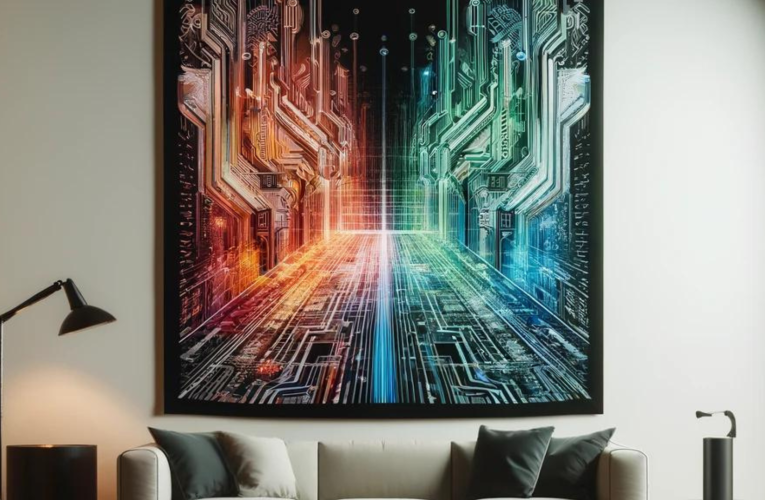
Future Trends
Predictions for Future Trends in Tapestry Design Driven by Technology
Discuss how technology is expected to further revolutionize tapestry design. This could include advancements in digital weaving techniques, such as the use of advanced CAD software to create intricate designs, or the integration of smart textiles that can change color or pattern based on environmental factors or user input. You could also explore the potential for 3D printing to create textured and multi-dimensional tapestries, or the use of augmented reality (AR) and virtual reality (VR) to create interactive tapestry experiences.
Potential Impact on Interior Design Trends
Speculate on how these future trends in tapestry design could influence interior design. For example, the ability to create customizable, on-demand tapestries using digital technology could lead to a rise in personalized home decor. The integration of smart textiles could also lead to tapestries becoming more than just decorative items, but also functional elements that enhance the living environment by regulating temperature or displaying information. Additionally, advancements in 3D printing and AR/VR could blur the lines between art and technology, creating immersive and dynamic tapestry installations that redefine interior spaces.

